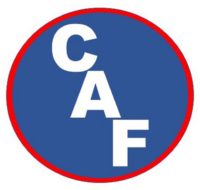Viscosity – The liquid thickness of a foam concentrate. Viscosity determines the liquid’s ability to flow – freely or not.
Viscosity is measured in centepoise (cps). All liquids are compared to the flow ability of water (which equals 1 cps). The higher the cps number, the thicker the liquid and the slower the flow.
The scale chart shown below lists several common products and their respective viscosity compared to water. The chart is for comparison purposes only.
The cps of most materials are measured between 68-72 degrees F. Most liquids increase in Viscosity as the temperature decreases. What may flow well at 68+ degrees F in the apparatus bay, may not flow as well on a scene at 20 degree F.
Why is this important to firefighters? Electronic Direct injection Proportioner Pumps pump liquid and are programmed to detect the flow of water (usually via a paddle wheel); then calculate the needed concentrate; then pump that needed amount of liquid into the water to create the desired solution (generally .5 or .3%) for NAF or CAF respectively.
In order for the proportioner to pump the correct amount, the proportioner must be calibrated to the water flow and viscosity of the of the concentrate being pumped. The calibration frequency and process is determined by the manufacturers instructions and recommendations. However, any time there is a change in the brand or type of concentrate being pumped, the unit must be re-calibrated to insure the pump is delivering the correct amount of concentrate for the desired % solution. Failure to re-calibrate when the product is changed could result in a failure to produce adequate foam or may result in a thicker solution which will result in a high dollar ($$) waste of product.
Depending on the brand of concentrate, it might be wise to consider calibrating the system twice each year – once for the hotter months, and once for the colder months. If nothing else, it will exercise the system a minimum of twice yearly. Proportioner Exercise!!
Prior to purchasing any new concentrate product, it is imperative that the department and system operators know the viscosity limits (high and low) of the proportioning unit and then check to see what is the viscosity for the new product. (NOTE: Many of the new green concentrates have higher viscosities than the current, quality Class A Foams). If the new product viscosity falls outside the limits of the proportioner, calibrating and pumping the desired % Solution will not be possible.
Sample Viscosity Chart – Just for Comparisons






































